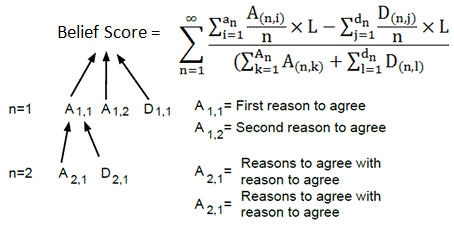 |
| John Stuart Mill, an influential liberal thinker of the 19th century and a teacher of utilitarianism, albeit his teachings are a bit different from Jeremy Bentham's philosophy |
Reasons to agree
- When you live in a society with laws, the ends (your goals) do not justify illegal means (or ways of accomplishing those goals).
- You are a hypocrite if you rely on the law to protect you, but you think you can break the law to accomplish your vision of the greater good.
- We need to examine both the ends and the means of our actions.
- From a practical standpoint, if everyone thought the end justified the means, then the world would be a much worse place, because an extremist view of the ends justifying the means would allow you to kill those who disagreed with you. This would result in a lot of war, and murder.
- A lot of people have justified their actions by saying that the end justifies the means.
- God will not require us to do evil, to defeat evil.
- People who say that the ends justify the means, cause more problems, trying to fix them, than if they would have just stayed out of it. Its better to live and let life.
- Just because an abortion may result in good things for the mother, and even society as a whole, doesn't mean that it is alright. You can't say that taking a life is ever justified.
- The rightness or wrongness of one's conduct is derived from the character of the behaviour rather than the outcomes of the conduct.
Reasons to disagree
- If killing is wrong, would you have killed Hitler, if you knew it would have saved millions of lives? The ends may justify the means, if in the long run it helps more people than it hurts. I would have killed Hitler.
- Sometimes the end justifies the means and sometimes it doesn't.
- The end does justify the means when the good guys are doing the justification.
- You can accomplish good by doing evil.
- The consequences of one's conduct are the ultimate basis for any judgment about the rightness of that conduct.
We can use algebra to represent each term, and make it more formal mathematical, with the below formula and explanation of each term:
Ranking this conclusion by the ratio of reasons to agree vs. disagree (please add your reason to agree or disagree)
- n: Number of "steps" the current arguments is removed from conclusion
- A(n,i)/n: When n=1 we are looking at arguments that are used directly to support or oppose a conclusion. The 2nd subscript is "i". This is used to indicate that we total all the reasons to agree. So when n=1, we could have 5 "i's" indicating there are 5 reasons to agree. These would be labeled A(1,1), A(1,2), A(1,3), A(1,4), and A(1,5). N on the bottom indicates that reasons to agree with reasons to agree only contribute ½ a point to the overall conclusion. Thus reasons to agree with reasons to agree with reasons to agree would only contribute 1/3 of a point, and so on.
- D(n,j)/n Ds are reasons to disagree, and work the same as As but the number of reasons to disagree, are subtracted from the conclusion score. Therefore, if you have more reasons to disagree, you will have a negative score. "J" is used, just to indicate that each reason is independent of the other.
- The denominator is the total number of reasons to agree or disagree. This normalizes the equation, resulting the conclusion score (CS) representing the total percentage of reasons that agree. The conclusion score will range between -100% and 100% (or -1 and +1)
- L: Linkage Score. The above equation would work very well, if people submitted arguments that they honestly felt supported or opposed conclusions. We could probably find informal ways of making this work, similar to how Wikipedia trusts people, and has a team of editors to ensure quality. However, we could also introduce formal ways to discourage people from using bad logic. For instance, people could submit that the "grass is green" as a reason to support the conclusion that we should legalize drugs. The belief that the grass is green, will have some good reasons to support it, and may have a high score. At first, to avoid this problem, I would just have editors remove bad faith arguments. But a formalized process would be to have for each argument a linkage score, between -1 and +1 that gets multiplied by the argument's score that represents the percentage of that argument's points that should be given to the conclusions points. See LinkageScore for more
 |
| Jeremy Bentham, best known for his advocacy of utilitarianism |




















